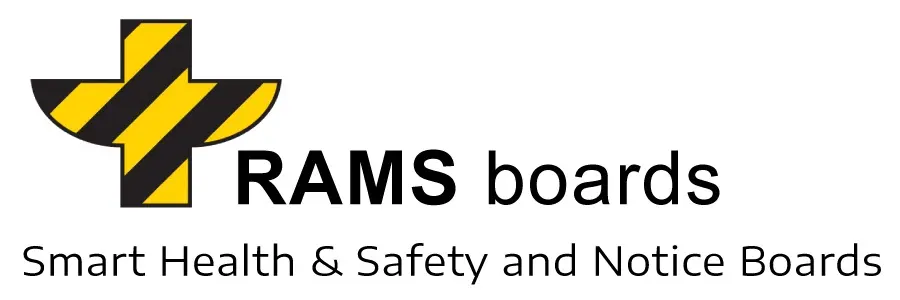While electronic security systems and RAMS boards are distinct in their functions and often complement each other, there are specific benefits to using a RAMS Board that highlight its unique value in safety and information management, especially in construction and industrial environments. These benefits underscore why a RAMS Board is not an alternative to electronic systems, but a crucial component in a comprehensive safety strategy.
While combining RAMS boards with electronic safety systems yields excellent results, there are distinct benefits to using a RAMS Board, especially in comparison to solely relying on electronic safety systems:
- Durability and Environmental Resistance: RAMS boards are manufactured from High-Density Polyethylene (HDPE), a material known for its resilience and ability to withstand harsh environmental conditions like extreme temperatures, UV exposure, and rain. This makes them particularly suited for outdoor and rugged construction environments, where electronic systems might be more vulnerable to damage.
- Visibility and Accessibility: The physical presence and strategic design of RAMS boards ensure high visibility and accessibility of safety information. Unlike electronic systems that may require booting up or could experience technical glitches, RAMS boards provide immediate, always-on access to crucial safety and health information.
- Multilingual Support: RAMS boards are designed to accommodate information in multiple languages, making them highly effective on multi-lingual construction sites. This feature ensures that crucial safety information is accessible and understandable to all employees, which might not always be feasible with electronic systems.
- Low Maintenance and Sustainability: RAMS boards require minimal maintenance, primarily involving routine cleaning. They are also eco-friendly and fully recyclable at the end of their life cycle, reducing environmental impact. Electronic systems, in contrast, may require more complex maintenance and are not always as environmentally sustainable.
- Cost-Effectiveness: In terms of upfront and long-term costs, RAMS boards are often more economical than electronic safety systems. They do not require electrical power, software updates, or technical troubleshooting, which are common aspects of maintaining electronic systems.
- Ease of Customization: RAMS boards can be easily customized to fit specific site requirements. This flexibility allows for the addition of new information or updates in a straightforward manner, which can sometimes be more complex with electronic systems that might require programming or software adjustments.
- Reliability in Power Outages: In situations where power outages are a concern, RAMS boards remain functional and accessible. Electronic systems, unless equipped with backup power solutions, may become inoperative during power failures, potentially compromising safety communication.
- Compliance with Standards: RAMS boards help in adhering to SHEQ standards and are often used by top-tier companies to demonstrate a proactive approach to workplace safety. While electronic systems also support compliance, the physical and ever-present nature of RAMS boards reinforces the commitment to safety standards visibly.
- Interactive Add-ons: RAMS boards can be adapted to include digital screens or interactive elements based on customer preferences. This allows for a hybrid approach where the reliability of physical boards is combined with the advantages of digital technology.
- No Technical Training Required: The use of RAMS boards does not require technical training for the workforce, making them immediately usable by anyone on site. Electronic systems might require some level of user training and familiarization.
In summary.
Electronic security systems and RAMS boards are distinct in their functions and complement each other. RAMS Board is not an alternative to electronic systems, but a crucial component in a comprehensive safety strategy
RAMS boards offer a robust, accessible, and reliable alternative to electronic safety systems, especially in environments where durability, visibility, and universal accessibility are key. Their adaptability, low maintenance, and effectiveness in communicating crucial safety information make them a preferred choice in various construction and industrial settings.
